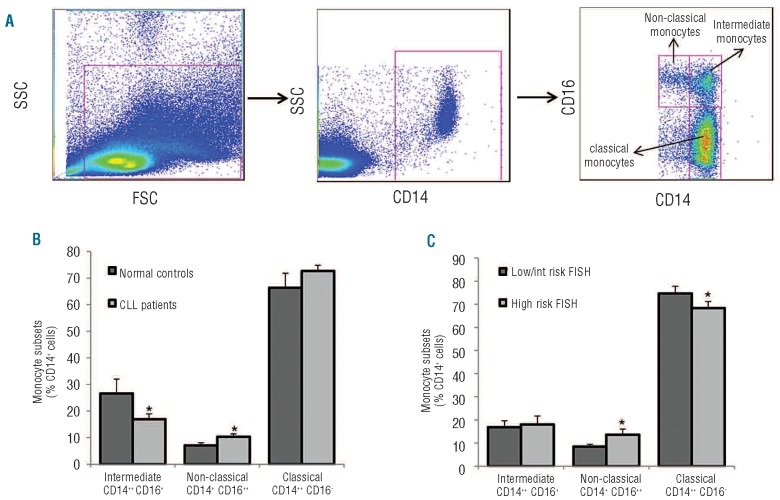Figure 1.
Distribution of monocyte subsets in peripheral blood of CLL patients and normal controls. (A) Fresh peripheral blood samples were collected from 26 untreated CLL patients and 13 normal controls. Mononuclear cells were stained with anti-CD14, anti-CD16 monoclonal antibodies and analyzed by polychromatic flow cytometry. Monocytes were defined as CD14+ and then subdivided in classical monocytes (CD14++CD16−), non-classical monocytes (CD14+CD16++) and intermediate monocytes (CD14++CD16+) as indicated. (B) Histograms represent the percentage of classical, intermediate and non-classical monocytes in CLL patients and normal controls. A shift from intermediate (down-modulated) towards non-classical monocytes (increased) is present in CLL compared to normal controls (*P<0.05, Mann-Whitney non-parametric test). (C) When CLL patients were divided into two prognostic subsets on the basis of genomic aberrations detected by FISH analysis (low risk, no abnormalities or deletion 13q, n=16; high risk= deletions 11q, 17p or trisomy 12, n=7), the unfavorable prognostic subgroup had an increased percentage of non-classical monocytes (*P<0.05, Mann-Whitney non-parametric test). Data are presented as mean ± standard error of mean.

